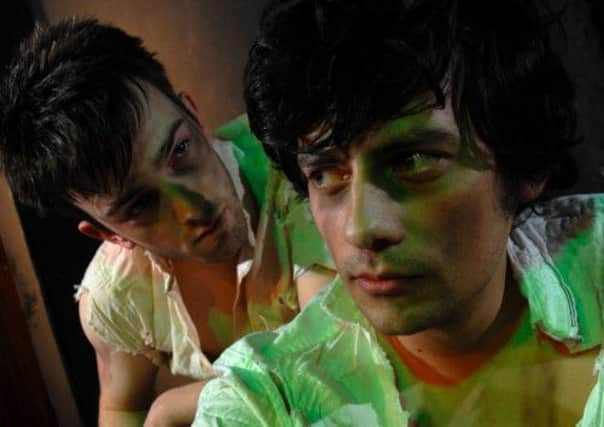Theatre’s innovative approach is paying dividends


Harrogate has been in the news of late.
Voted as one of the best places in the country to live, the leafy North Yorkshire suburb is a place with fine restaurants, spa hotels, ladies who lunch – and home to one of the county’s most innovative and bold theatres, producing work at the fringes of theatrical innovation.
Unlikely? Arguably.
True? Well, the evidence certainly points that way.
In the Arts Council cuts of a few years ago, Harrogate Theatre was hammered.
Advertisement
Hide AdAdvertisement
Hide AdThe theatre, it’s fair to say, was not performing at the top of its game. Audiences had grown used to what was a fairly staple diet of work.
The Arts Council cuts reflected what might have been considered a lack of boldness, an absence of ambition within the organisation.
None of those accusations leveled at the theatre would hold any water today.
Kevin Jamieson is the executive producer at Harrogate Theatre. Alongside chief executive David Bown, and a dedicated staff, he has been instrumental in turning the good ship Harrogate Theatre right around in the past few years.
Advertisement
Hide AdAdvertisement
Hide AdToday, he doesn’t want to dwell on the Arts Council cuts that affected the theatre so drastically, but is willing to acknowledge the part they paid in allowing the building to arrive in the state in which it finds itself in 2013. “The cuts were a long time ago, but they shaped where we are today,” admits Jamieson.
“It made us examine what we do, how and why we do it and made us ask if there was a better model for us to work towards.”
Last year Jamieson attended a theatre conference at West Yorkshire Playhouse called Devoted and Disgruntled. The conference, open to all, does what it says on the tin – attracting people who love theatre as an art form, but have issues with the way it currently operates.
The conference is designed to be non-hierarchical and anyone can call a session on anything to do with theatre in its widest sense.
Advertisement
Hide AdAdvertisement
Hide AdAs one of the people responsible for the programming and running of Harrogate Theatre, it was no surprise to find Jamieson at the conference. That he called a session, again, no particularly unusual. That he called the session to ask how his theatre could work with and help the theatre-makers in the room – largely those working on the fringes of Yorkshire theatre – now that, was a surprise.
“When we had the first funding cut eight years ago, it was a real backs to the wall period for us here,” he says.
“Overnight we had to change the way we did things. We had to cut staff and for everyone who stayed, it was a case of rolling up our sleeves and getting on with the job.”
Eight years on from that difficult period, the theatre looks a very different prospect.
Advertisement
Hide AdAdvertisement
Hide Ad“I think it was easy for people to pigeonhole Harrogate, decide that we do Ayckbourn plays, and leave it at that,” says Jamieson.
“And to an extent it would be easy for us to keep putting on certain plays that we know will get an audience and tick along like that – and the truth is, a good production of an Ayckbourn play is an important part of the mix of what we do. But we are doing much more than that as well.
“There is a huge underbelly of young theatre makers who we want to tap into and want to bring into the theatre to create as diverse an audience as possible here.”
If that is the aim, then Jamieson, Bown and the team can consider it mission accomplished – so far.
Advertisement
Hide AdAdvertisement
Hide Ad“We are playing to 70 percent houses and we currently have 15 shows in various states of production that we have some involvement with,” says Jamieson, who has responsibility for programming the town’s Royal Hall as well as the theatre’s main house and studio.
“It means we have a 1,000 seater, a 500-seater and a studio which can sit an audience of 70 to programme. Instead of seeing that as a challenge to fill every night, we look at it as a chance to take all the space we have and share it with the artists we think are making exciting and interesting work. It means you can have comedians selling out the Hall, a show like the one (internationally renowned) 1927 brought to our mainhouse and sold out and the the studio showing the work of a smaller, experimental company, all in the same week.”
That’s the other thing the team has done. As well as showing work, it has freed up the studio space so artists can make use of it to create work. And continue to turn the leafy suburb into a hotbed of theatrical innovation.
Forthcoming shows at Harrogate
Thunder Road’s new adaptation of The Count Of Monte Cristo (May 1-11) transforms Dumas’s character-driven 900-pager into a snappy two-hander.
Advertisement
Hide AdAdvertisement
Hide AdIl Pixel Rosso’s The Great Spavaldos (June 7 and 8) uses video goggles to recreate the feeling of flying through the air.
Hannah Jane Walker’s intimate conversation This Is Just To Say (June 7-8) explores what it means to say sorry.
HG Wells’ sci fi classic The Time Machine: An Invention (July 12 and 13) gets a fresh adaptation by Nunkie.
Tickets 01423 502116. www.harrogatetheatre.co.uk